Disaccharides and Fructooligosaccharides (FOS) Production by Wild Yeasts Isolated from Agave
- PMID: 40807650
- PMCID: PMC12345667
- DOI: 10.3390/foods14152714
Disaccharides and Fructooligosaccharides (FOS) Production by Wild Yeasts Isolated from Agave
Abstract
Fructooligosaccharides (FOS) are short fructans with different degrees of polymerization (DP) and bonds in their structure, generated by the distinct activities of fructosyltransferase enzymes, which produce distinct types of links. FOS are in high demand on the market, mainly because of their prebiotic effects. In recent years, depending on the link type in the FOS structure, prebiotic activity has been shown to be increased. Studies on β-fructanofuranosidases (Ffasa), enzymes with fructosyltransferase activity in yeasts, have reported the production of 1F-FOS, 6F-FOS, and 6G-FOS. The aims of this investigation were to evaluate the capability of fifteen different yeasts to grow in Agave sp. juices and to determine the potential of these juices as substrates for FOS production. Additionally, the research aimed to corroborate and analyze the fructosyltransferase activity of enzymatic extracts obtained from agave yeasts by distinct induction media and to identify the role and optimal parameters (time and sucrose and glucose concentrations) for FOS and disaccharides production through Box-Behnken designs. To carry out such a task, different techniques were employed: FT-IR, TLC, and HPAEC-PAD. We found two yeasts with fructosyltransferase activity, P. kudriavzevii ITMLB97 and C. lusitaniae ITMLB85. In addition, within the most relevant results, the production of the FOS 1-kestose, 6-kestose, and neokestose, as well as disaccharides inulobiose, levanobiose, and blastose, molecules with potential applications, was determined. Overall, FOS production requires suitable yeast species, which grow in a medium under optimal conditions, from which microbial enzymes with industrial potential can be obtained.
Keywords: 6-kestose; blastose; fructooligosaccharides; yeast.
Conflict of interest statement
The authors declare that they have no conflicts of interest.
Figures
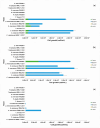



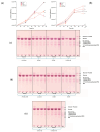
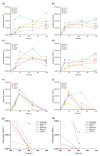
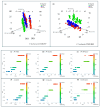
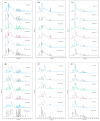



Similar articles
-
Prescription of Controlled Substances: Benefits and Risks.2025 Jul 6. In: StatPearls [Internet]. Treasure Island (FL): StatPearls Publishing; 2025 Jan–. 2025 Jul 6. In: StatPearls [Internet]. Treasure Island (FL): StatPearls Publishing; 2025 Jan–. PMID: 30726003 Free Books & Documents.
-
Signs and symptoms to determine if a patient presenting in primary care or hospital outpatient settings has COVID-19.Cochrane Database Syst Rev. 2022 May 20;5(5):CD013665. doi: 10.1002/14651858.CD013665.pub3. Cochrane Database Syst Rev. 2022. PMID: 35593186 Free PMC article.
-
Management of urinary stones by experts in stone disease (ESD 2025).Arch Ital Urol Androl. 2025 Jun 30;97(2):14085. doi: 10.4081/aiua.2025.14085. Epub 2025 Jun 30. Arch Ital Urol Androl. 2025. PMID: 40583613 Review.
-
Sexual Harassment and Prevention Training.2024 Mar 29. In: StatPearls [Internet]. Treasure Island (FL): StatPearls Publishing; 2025 Jan–. 2024 Mar 29. In: StatPearls [Internet]. Treasure Island (FL): StatPearls Publishing; 2025 Jan–. PMID: 36508513 Free Books & Documents.
-
Systemic treatments for metastatic cutaneous melanoma.Cochrane Database Syst Rev. 2018 Feb 6;2(2):CD011123. doi: 10.1002/14651858.CD011123.pub2. Cochrane Database Syst Rev. 2018. PMID: 29405038 Free PMC article.
References
-
- Banguela A., Hernández L. Fructans: From natural sources to transgenic plants. Biotecnol. Apl. 2006;23:202–210.
-
- Huazano-García A., Silva-Adame M.B., Vázquez-Martínez J., Gastelum-Arellanez A., Sánchez-Segura L., López M.G. Highly branched neo-fructans (Agavins) attenuate metabolic endotoxemia and low-grade inflammation in association with gut microbiota modulation on high-fat diet-fed mice. Foods. 2020;9:1792. doi: 10.3390/foods9121792. - DOI - PMC - PubMed
-
- De la Rosa O., Flores-Gallegos A.C., Muñíz-Marquez D., Nobre C., Contreras-Esquivel J.C., Aguilar C.N. Fructooligosaccharides production from agro-wastes as alternative low-cost source. Trends Food Sci. Technol. 2019;91:139–146. doi: 10.1016/j.tifs.2019.06.013. - DOI
Grants and funding
LinkOut - more resources
Full Text Sources

